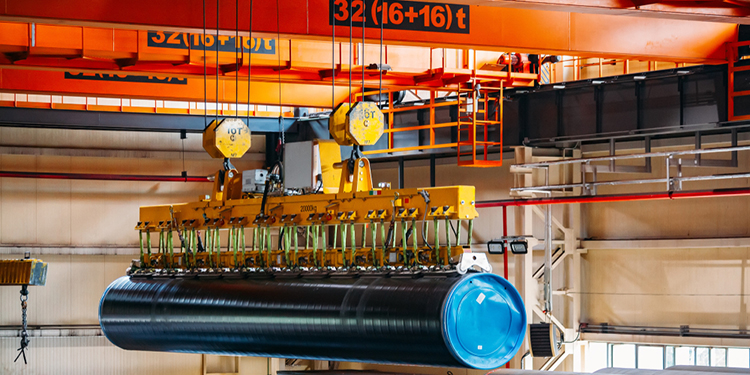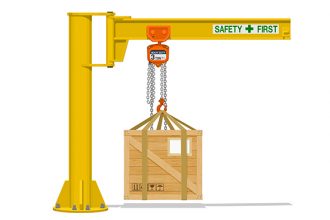Why Every Overhead Lifting Solution Is Customized

Rarely are two overhead lifting applications the same. The location might be indoors or outside. Ceiling heights might be high or low. Some facilities have building columns spaced closely together; others may have none—and the widths and lengths of buildings are always different.
Then there are the types of loads to be handled. Some are irregularly shaped, extremely heavy or exceptionally fragile. Others are small and moved quickly from one manual process to another.
With this vast range of potential requirements, it just makes sense that every overhead lifting solution is customized to some degree to meet both the specific application needs and the installation’s surroundings in order to achieve maximum operational productivity and efficiency.
That’s not to say that there aren’t standard hoist, crane and monorail component designs being utilized. Indeed, there are many, because the majority of manufacturers create customized solutions from standard, modular components that can be assembled in a variety of ways to accommodate the loads being handled and the space in which they are moved. These systems are available in a wide range of configurations and price points, ensuring that multiple application specifications are addressed in the most cost-effective way.
Likewise, custom-engineered solutions can be created. While often more expensive than systems built from standard components, these types of overhead lifting solutions can be the most economical option in a facility with high performance requirements, low overhead space or floor obstructions. Alternately, an engineered, multi-part solution—such as one that serves multiple workstations—might be the most efficient use of space while increasing operator productivity and load control.
Among the flexibility highlights of overhead handing solutions either custom-engineered or constructed from standard components are:
- The ability for cranes and monorail systems to be easily and economically adapted to accommodate most facility configurations and applications. They can also operate in any plant to meet unique operational needs or load specifications.
- Hoists, which can be used both indoors and outside, can be easily supplied with higher lifting capability through the addition of a longer chain (such as those utilized in manual or electric chain hoists). Further, a variety of hoists can be equipped with load handling attachments on site to interface with different loads.
When considering the selection of a crane system, it is important to specify the following:
- Weight of the load, frequency of load movements, distance traveled, type, and dimensions of the load
- Length, width and height of the area to cover, obstructions, and clear height overhead
- Environmental conditions, indoor or outdoor location, ambient temperature, and other external factors
For a complete list of crane selection criteria, download a copy of the Buyer’s Guide, published by the Crane Manufacturers Association of America (CMAA).
Wondering about the other potential efficiency and productivity benefits offered by overhead handling systems? MHI’s Overhead Alliance (which includes the Crane Manufacturers Association of America (CMAA), the Hoist Manufacturers Institute (HMI), and the Monorail Manufacturers Association (MMA)) explores 13 different ways these technologies enhance manufacturing and distribution operations in the free publication, “Expand Your Possibilities. Discover the Potential. Choose Overhead Lifting.”



